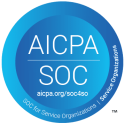Whether it’s cloud computing, hosted solutions, or software as a service (SaaS), running your CAMA software and having your information and data “in the cloud” is becoming increasingly popular with property tax assessors. Why? Because the cloud offers some key advantages over traditional on-premise computer systems, particularly in relation to security, reliability, and cost.
Security
Your organization probably has a server room somewhere in your building. The servers in that room are the key to your organization’s operations and your ability to access your data and run your CAMA and related software systems — in other words, to do your work.
But what happens if somebody physically breaks into the room and either corrupts or destroys those servers? What happens if somebody remotely accesses those servers and does the same? Or perhaps locks you out of your computer system unless or until your organization pays a ransom? These are real risks with on-premise servers.
The chances of any of these things happening with cloud computing, however, are significantly decreased for two main reasons:
- Large, reputable, cloud computing companies (such as Microsoft, Amazon, and Google) have enormous, well-built, server facilities with multiple layers of physical protection — think perimeter fencing, limited entry, enhanced surveillance, biometric scanning, etc.
- These companies also employ a mix of elegant and sophisticated tools and techniques to provide advanced technological protection — tools and techniques that almost certainly are not readily available or easily accessible to your organization.
We often feel intuitively that having something precious or important close at hand confers security. Cloud computing presents a compelling argument otherwise.
Reliability
Thinking again about that server room: What happens when one or more of your servers fail, are destroyed in a natural disaster, or are taken offline for system maintenance or any other reason? If you’re lucky and have failover systems or at least backup hardware, perhaps you endure limited service interruption. But if your operation doesn’t have these additional computer resources, your CAMA system may be completely offline for however long it takes to resolve the server issues.
Major cloud computing companies boast uptime rates of 99% or higher because they have a multitude of servers and the ability to shift resources dynamically, moving systems from hardware that goes down to functional hardware — virtually without interruption. In fact, such transitions happen so seamlessly that users are often entirely unaware of server or system failures, which is clearly a significant and comforting advantage for property tax assessors.
Cost
There are two critical dimensions to the cost advantage of cloud computing:
- No upfront hardware costs: Cloud providers offer a pay-as-you-go approach, where you pay only for the resources you use as you use them. This allows your organization to avoid the large upfront costs of physical hardware and the human resources required to set up and configure that hardware.
- Dynamic scalability: In a cloud-based set-up, resources can be brought online very quickly and easily, even for short periods of time (days or even hours). And these same resources can be “turned off” just as quickly and easily. This flexibility increases your organization’s agility and adaptability in the face of seasonal or other workload fluctuations without commensurately increasing your hardware and set-up costs.
With the pressure property tax assessment organizations face to operate as efficiently and cost-effectively as possible, it is not a surprise that we’re seeing increased and growing interest in moving to the cloud.
That All Sounds Great — Now What?
Cloud computing has significant advantages — security, reliability, and cost — but it’s worth taking some time to think through several factors before moving your CAMA system to the cloud. In particular:
- Research the control and responsibility tradeoffs among the simplest cloud delivery model of software as a service (SaaS), the most complex model of infrastructure as a service (IaaS), and the “in-between” option of platform as a service (PaaS) to determine what makes sense for your organization.
- Contrast the costs and benefits of having resources in your organization dedicated to interacting with a cloud computing company to those of having your CAMA vendor assume that responsibility.
- Determine your internet service speed and reliability, and, if necessary, your options to improve both. Ultimately, any cloud computing solution is only as fast and dependable as the internet connection between your office and the cloud service.
There are compelling reasons to consider moving your organization’s CAMA solution to the cloud, but it’s not a decision to be made overnight, without planning and preparation.
Farragut can help you work through this important decision. Reach out to me here if you’d like more information. We want to help your organization reach its full potential.





